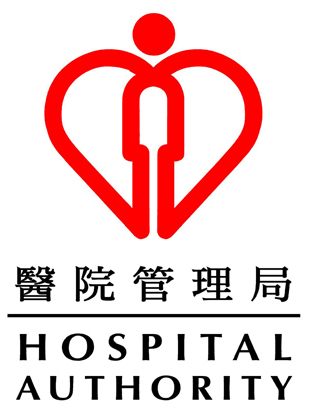 HA Central Committee on Infectious Diseases
HA Central Committee on Infectious Diseases Ref No.
CCIDER-COVID19-002(v2)
and Emergency Response (CCIDER)
Issue Date
21 March 2022
Review Date 21 March 2025
Interim Recommendation on Clinical Management of Approved by CCIDER
Paediatric Patients of Coronavirus Disease 2019
(COVID-19) Infection
Page
Page 1 of 11
Interim Recommendation on Clinical Management of
Paediatric Patients of Coronavirus Disease 2019
(COVID-19) Infection
Version
Effective Date
1
13 March 2020
2
21 March 2022
Document Number CCIDER-COVID19-002(v2)
Author
HA Task Force on Clinical Management on
Infection (TFCM)
Custodian
Central Committee on Infectious Diseases and
Emergency Response (CCIDER)
Approved by
Central Committee on Infectious Diseases and
Emergency Response (CCIDER)
Approval Date
21 March 2022
Next Review Date
21 March 2025
 HA Central Committee on Infectious Diseases
HA Central Committee on Infectious Diseases Ref No.
CCIDER-COVID19-002(v2)
and Emergency Response (CCIDER)
Issue Date
21 March 2022
Review Date 21 March 2025
Interim Recommendation on Clinical Management of Approved by CCIDER
Paediatric Patients of Coronavirus Disease 2019
(COVID-19) Infection
Page
Page 2 of 11
1. For paediatric patients infected with COVID-19, cases reported in the current
literature are mild in clinical severity, and there is no evidence-based treatment
regimen.
2. Taking reference that paediatric infection with SARS-CoV was associated with
milder disease compared with adult counterparts, a conservative management
approach wil be adopted. Please consult PID specialist for specific anti-viral and
immunomodulator treatment if considered necessary.
3.
Reporting: Please report suspected cases fulfil ing the reporting criteria of
Coronavirus Disease 2019 (COVID-19) to the Central Notification Of ice (CENO) of
CHP via NDORS. The case definition is available on the above website of CENO
On-line
(https://cdis.chp.gov.hk/CDIS_CENO_ONLINE/ceno.html ). Both reporting
criteria and case definition are subject to change upon availability of further
epidemiological, clinical and virological data.
4.
Diagnosis: Diagnosis can be established by either Rapid Antigen Test (RAT) or RT-
PCR of SARS-CoV2.
5.
Investigation after admission (if clinically indicated):
(i) CBP D/C, ESR, CRP, L/RFT, LDH, CK, D-dimer, ABG;
(ii) Chest X-ray (CXR)
(iii) High Resolution Computed Tomography (HRCT) of thorax.
(iv) Prescription of empirical antibiotics wil be at the discretion of in charge
paediatricians.
6.
Closely monitor vital signs and organ functions e.g. anosmia, ageusia, etc.; and
recognize signs for clinical deterioration including signs for clinical deterioration
including croup, pneumonia, pulmonary embolism, central nervous system
involvement, etc.
(i) If clinically stable, continue monitoring.
(ii) If clinically deteriorated e.g. increase oxygen requirement, progressive
CXR infiltrates, extensive pulmonary involvement in HRCT thorax, change
in mental status, repeated and / or prolonged seizure, etc discuss with PID
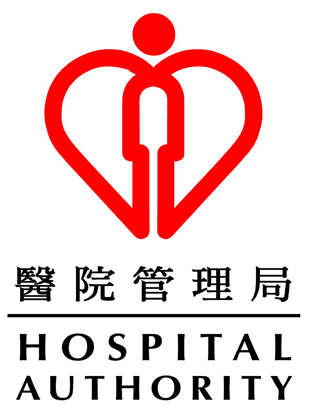 HA Central Committee on Infectious Diseases
HA Central Committee on Infectious Diseases Ref No.
CCIDER-COVID19-002(v2)
and Emergency Response (CCIDER)
Issue Date
21 March 2022
Review Date 21 March 2025
Interim Recommendation on Clinical Management of Approved by CCIDER
Paediatric Patients of Coronavirus Disease 2019
(COVID-19) Infection
Page
Page 3 of 11
specialists for anti-viral and / or immunomodulation treatment.
7.
Antiviral treatment: Unlicensed treatment should be given under ethically-
approved clinical trial as far as possible. In the absence of appropriate clinical trials,
the following treatment may be considered in patients having the following
conditions with increased risk of severe disease.
• Diabetes mellitus
• Immunocompromised condition (congenital or acquired)
• Underlying chronic il nesses
• Autoimmune, autoinflammatory and immunodysregulatory conditions
• Incomplete COVID-19 vaccination status
• Obesity (body mass index of 30kg/m2 or higher)
8.
Antiviral treatment available in paediatric patients:
(i) Paxlovid
•
Paxlovid is a combination of nirmatrelvir, a SARS-CoV-2 main protease
inhibitor that prevents viral replication, and ritonavir, an HIV-1 protease
inhibitor and CYP3A inhibitor that is not active against SARS-CoV-2 but
inhibits the metabolism of nirmatrelvir resulting in increased plasma
concentration of nirmatrelvir.
•
Paxlovid may be used in paediatric patients (12 years of age and older
weighing at least 40 kg).
•
Dosage and administration: 300 mg nirmatrelvir (two 150 mg tablets)
with 100 mg ritonavir (one 100 mg tablet), with all three tablets taken
together twice daily for 5 days.
• Criteria for use
Incomplete COVID-19 vaccination, AND
Individuals with high risk factors (e.g. diabetes OR
immunocompromised status etc. Please refer to Annex B)
• Clinical consideration
Within 5 days of symptom onset, AND
Test positive (RAT/PCR), AND
SpO2 > 94% (room air), AND
With or without early pneumonic changes
 HA Central Committee on Infectious Diseases
HA Central Committee on Infectious Diseases Ref No.
CCIDER-COVID19-002(v2)
and Emergency Response (CCIDER)
Issue Date
21 March 2022
Review Date 21 March 2025
Interim Recommendation on Clinical Management of Approved by CCIDER
Paediatric Patients of Coronavirus Disease 2019
(COVID-19) Infection
Page
Page 4 of 11
• Exclusion criteria
Patients less than 12 years of age or weighing below 40kg
• Warnings and precautions:
The concomitant use of Paxlovid and certain other drugs may result
in potentially significant drug interactions. Consult the full prescribing
information prior to and during treatment for potential drug
interactions. (Annex A)
Al ergic Reactions/Hypersensitivity: Hypersensitivity reactions have
been reported with Paxlovid. If signs and symptoms of a clinically
significant hypersensitivity reaction or anaphylaxis occur,
immediately discontinue Paxlovid and initiate appropriate
medications and/or supportive care.
Hepatotoxicity: Hepatic transaminase elevations, clinical hepatitis,
and jaundice have occurred in patients receiving ritonavir.
HIV-1 Drug Resistance: Paxlovid use may lead to a risk of HIV-1
developing resistance to HIV protease inhibitors in individuals with
uncontrolled or undiagnosed HIV-1 infection.
• Adverse reactions
Dysgeusia, diarrhea, hypertension, and myalgia.
• Renal impairment: dose reduction for moderate renal impairment (eGFR
≥30 to <60 mL/min): 150 mg nirmatrelvir (one 150 mg tablet) with 100 mg
ritonavir (one 100 mg tablet), with both tablets taken together twice daily
for 5 days. Paxlovid is not recommended in patients with severe renal
impairment (eGFR <30 mL/min).
From operational perspectives, the most recent eGFR result within
1 year can be used for reference. For patients without recent eGFR
result available, it is reasonable to choose full dose for healthy
paediatric patients without known renal impairment.
• Hepatic impairment: Paxlovid is not recommend in patients with severe
hepatic impairment (Child-Pugh Class C).
• Pregnancy consideration: There are no available human data on the use
of nirmatrelvir during pregnancy to evaluate for a drug-associated risk of
major birth defects, miscarriage, or adverse maternal or fetal outcomes.
Published observational studies on ritonavir use in pregnant women have
 HA Central Committee on Infectious Diseases
HA Central Committee on Infectious Diseases Ref No.
CCIDER-COVID19-002(v2)
and Emergency Response (CCIDER)
Issue Date
21 March 2022
Review Date 21 March 2025
Interim Recommendation on Clinical Management of Approved by CCIDER
Paediatric Patients of Coronavirus Disease 2019
(COVID-19) Infection
Page
Page 5 of 11
not identified an increase in the risk of major birth defects. Published
studies with ritonavir are insuf icient to identify a drug associated risk of
miscarriage. There are maternal and fetal risks associated with untreated
COVID-19 in pregnancy. The use of nirmatrelvir and ritonavir should not
be withheld from pregnant patients when the potential benefits outweigh
the possible risks (NIH 2022).
• Breastfeeding consideration: Ritonavir is present in breast milk; excretion
of nirmatrelvir is unknown. Lactation is not a contraindication for use
(ACOG 2022; FDA 2021). According to the manufacturer, the decision to
breastfeed during therapy should consider the risk of infant exposure, the
benefits of breastfeeding to the infant, and the benefits of treatment to the
mother (FDA 2021).
(ii) Remdesivir
• Remdesivir is an antiviral and inhibits SARS-CoV-2 RNA polymerase
which perturbs viral replication. Remdesivir is given intravenously, once
daily after an initial loading dose.
• Remdesvir may be considered in severe paediatric Covid patients, with
organ failure such as severe pneumonia (SaO2 < 94% on room air),
encephalitis, myocarditis, etc. Because of the limited data, decision should
be made case by case.
• Recommended dose for paediatric use of Redemsivir:
Paediatric patients weighing 3.5kg – 40kg:
IV: One dose of 5mg/kg on Day 1 followed by 2.5mg/kg on Day 2
and subsequent days.
Paediatric patients weighing >40kg, adult dose should be used:
IV: One dose 200 mg on day 1 followed by 100 mg for subsequent
days.
(For patients who are not on ECMO or invasive mechanical ventilation,
the duration of treatment is up to 5 days or until Day 10 if no
symptomatic improvement is observed).
Remdesivir should be made up to the dilution volume with 0.9% saline
and infused intravenously over 30 to 120 minutes.
• Significant adverse reactions that might be consider include:
 HA Central Committee on Infectious Diseases
HA Central Committee on Infectious Diseases Ref No.
CCIDER-COVID19-002(v2)
and Emergency Response (CCIDER)
Issue Date
21 March 2022
Review Date 21 March 2025
Interim Recommendation on Clinical Management of Approved by CCIDER
Paediatric Patients of Coronavirus Disease 2019
(COVID-19) Infection
Page
Page 6 of 11
Cardiac ef ects: Postmarketing reports of bradycardia, including
severe bradycardia (some fatal) and sinus bradycardia, have been
reported in patients receiving remdesivir
Hepatic ef ects: Mild to moderate (grades 1 to 2), reversible
transaminase elevations, including increased serum alanine
aminotransferase and increased serum aspartate aminotransferase,
have been observed in healthy volunteers and patients with SARS-
CoV-2. It is unclear if these ef ects are drug-related or related to
SARS-CoV-2.
Hypersensitivity and infusion related reactions: Hypersensitivity
reactions, including anaphylaxis and infusion related reactions, have
been reported during and following remdesivir administration.
Patients may experience angioedema, bradycardia, diaphoresis,
dyspnea, fever, hypertension, hypotension, hypoxia, nausea, rash,
shivering, tachycardia, and wheezing. Slower infusion rates
(maximum infusion time of up to 120 minutes) may be considered in
patients to potentially prevent hypersensitivity or infusion related
reactions.
• Use in circumstances of hepatic and renal impairment:
Hepatic Impairment:
ALT>= 5 times upper limit, use is not recommended.
ALT< 5 times upper limit, use if therapeutic benefits outweigh the risk.
Renal impairment:
eGFR >= 30ml/minute. No dosage adjustment recommended.
eGFR <30ml/minute. No formal safety or pharmaceutical data are
available for patients with kidney impairment or who are receiving renal
replacement therapies. Use is not recommended by the manufacturer.
However, significant toxicity with a short duration of therapy (e.g. 5 to 10
days) is unlikely; benefits may outweigh the risks in selected patients.
(iii) Information and consent form
• As there is no consensus on international recommendation of using specific
antiviral agents of treatment of Covid, it is necessary to sign an information
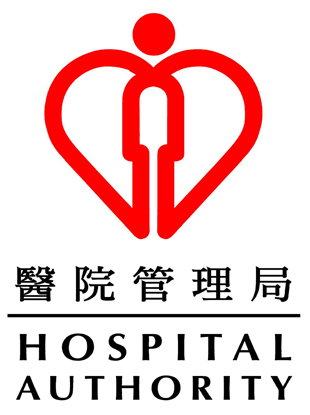 HA Central Committee on Infectious Diseases
HA Central Committee on Infectious Diseases Ref No.
CCIDER-COVID19-002(v2)
and Emergency Response (CCIDER)
Issue Date
21 March 2022
Review Date 21 March 2025
Interim Recommendation on Clinical Management of Approved by CCIDER
Paediatric Patients of Coronavirus Disease 2019
(COVID-19) Infection
Page
Page 7 of 11
and consent form for experimental treatment prior to use. A copy of the
consent form dated 21 September 2021 was attached in the appendix
section.
9.
Immunomodulation Therapy: Please consult PID Specialists if this considered
necessary.
10.
Use of adjunct treatment: There is
no adjunctive treatment recommended at this
moment.
11.
Psychological support: The patients are more prone to have symptoms of
anxiety and/or depression, proactive psychological counselling and early
intervention are needed.
12.
Release of isolation order: Follow the update arrangement by the Centre for
Health Protection.
13.
Out-patient Follow Up: To consider follow up patients for: persistence of
symptoms e.g. anosmia, ageusia, decrease in exercise tolerance; or occurrence
of new symptoms.
14.
References:
1. Report of clustering pneumonia of unknown etiology in Wuhan City. Wuhan
Municipal Health Commission, 2019.
http://wjw.wuhan.gov.cn/front/web/showDetail/2019123108989
2. N Zhu, et. al. A Novel Coronavirus from Patients with Pneumonia in China,
2019. NEJM 24 Jan 2020. DOI: 10.1056/NEJMoa2001017.
3. Phoebe Qiaozhen Mak, et. al. Anosmia and Ageusia: Not an Uncommon
Presentation of COVID—19 Infection in Children and Adolescents. The
Pediatric Infectious Disease Journal • Volume 39, Number 8, August 2020.
4. Melissa Chima, et. al. COVID-19–Associated Pulmonary Embolism in
Pediatric Patients. Hospital Pediatrics Volume 11, Issue 6, June 2021. DOI:
https://doi.org/10.1542/hpeds.2021-005866
5. Interim Recommendation on Clinical Management of Adult Cases with
 HA Central Committee on Infectious Diseases
HA Central Committee on Infectious Diseases Ref No.
CCIDER-COVID19-002(v2)
and Emergency Response (CCIDER)
Issue Date
21 March 2022
Review Date 21 March 2025
Interim Recommendation on Clinical Management of Approved by CCIDER
Paediatric Patients of Coronavirus Disease 2019
(COVID-19) Infection
Page
Page 8 of 11
Coronavirus Disease 2019 (COVID 19), HA Central Commit ee on Infectious
Diseases and Emergency Response (CCIDER). Ef ective since 11 March
2022.
6. J.H. Beigel, et. al. Remdesivir for the Treatment of Covid-19 — Final Report.
N Engl J Med 2020; 383: 1813-26. DOI: 10.1056/NEJMoa2007764.
7. NIH COVID-19 Treatment Guidelines.
https://www.covid19treatmentguidelines.nih.gov/
8. Fact sheet for healthcare providers: emergency use authorization for Paxlovid.
Available at:
https://www.fda.gov/media/155050/download
9. Nirmatrelvir and ritonavir (United States and Canada: Authorized for use):
Drug information. Uptodate (accessed 7 March 2022)
Acknowledgement: Mr. Burns Wong, Clinical Pharmacist, Princess Margaret
Hospital
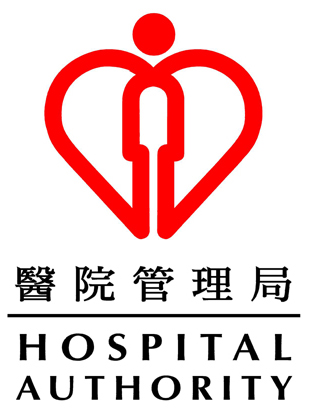 HA Central Committee on Infectious Diseases
HA Central Committee on Infectious Diseases Ref No.
CCIDER-COVID19-002(v2)
and Emergency Response (CCIDER)
Issue Date
21 March 2022
Review Date 21 March 2025
Interim Recommendation on Clinical Management of Approved by CCIDER
Paediatric Patients of Coronavirus Disease 2019
(COVID-19) Infection
Page
Page 9 of 11
Annex A. Important Drug Interactions with Paxlovid*
Paxlovid is contraindicated with drugs that are highly dependent on CYP3A for clearance
and for which elevated concentrations are associated with serious and/or life-threatening
reactions:
•
Alpha1-adrenoreceptor antagonist: alfuzosin
•
Analgesics: pethidine, propoxyphene
•
Antianginal: ranolazine
•
Antiarrhythmic: amiodarone, dronedarone, flecainide, propafenone, quinidine
•
Anti-gout: colchicine
•
Antipsychotics: lurasidone, pimozide, clozapine
•
Ergot derivatives: dihydroergotamine, ergotamine, methylergonovine
•
HMG-CoA reductase inhibitors: lovastatin, simvastatin
•
PDE5 inhibitor: sildenafil (Revatio®) when used for pulmonary arterial hypertension
(PAH)
•
Sedative/hypnotics: triazolam, oral midazolam
Paxlovid is contraindicated with drugs that are potent CYP3A inducers where significantly
reduced nirmatrelvir or ritonavir plasma concentrations may be associated with the
potential for loss of virologic response and possible resistance. Paxlovid cannot be
started immediately after discontinuation of any of the following medications due to the
delayed of set of the recently discontinued CYP3A inducer:
•
Anticancer drugs: apalutamide
•
Anticonvulsant: carbamazepine, phenobarbital, phenytoin
•
Antimycobacterials: rifampin
•
Herbal products: St. John’s Wort (hypericum perforatum)
*Please refer to Fact Sheet for Healthcare Providers: Emergency Use Authorization for
Paxlovid (Table 1) for listing of clinically significant drug interactions (Available at:
https://www.fda.gov/media/155050/download )
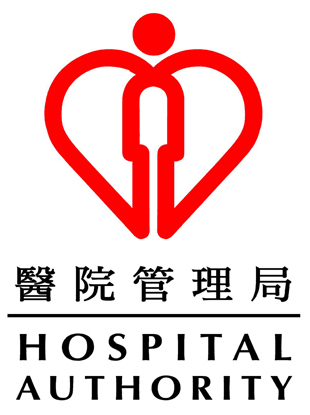 HA Central Committee on Infectious Diseases
HA Central Committee on Infectious Diseases Ref No.
CCIDER-COVID19-002(v2)
and Emergency Response (CCIDER)
Issue Date
21 March 2022
Review Date 21 March 2025
Interim Recommendation on Clinical Management of Approved by CCIDER
Paediatric Patients of Coronavirus Disease 2019
(COVID-19) Infection
Page
Page 10 of 11
Annex B. Underlying Medical Conditions Associated with Higher Risk for Severe
COVID-19
1.
Higher risk for severe COVID-19 outcomes
• Cancer
• Cerebrovascular disease
• Chronic kidney disease*
• Chronic lung diseases limited to:
Interstitial lung disease
Pulmonary embolism
Pulmonary hypertension
Bronchiectasis
COPD (chronic obstructive pulmonary disease)
• Chronic liver diseases limited to:
Cirrhosis
Non-alcoholic fatty liver disease
Alcoholic liver disease
Autoimmune hepatitis
• Cystic fibrosis
• Diabetes mellitus, type 1 and type 2*
• Disabilities
Attention-Deficit/Hyperactivity Disorder (ADHD)
Cerebral Palsy
Congenital Malformations (Birth Defects)
Limitations with self-care or activities of daily living
Intellectual and Developmental Disabilities
Learning Disabilities
Spinal Cord Injuries
(For the list of al conditions that were part of the review,
https://www.cdc.gov/coronavirus/2019-ncov/hcp/clinical-
care/underlyingconditions.html#accordion-1-card-1 )
• Heart conditions (such as heart failure, coronary artery disease, or
cardiomyopathies)
• HIV (human immunodeficiency virus)
• Mental health disorders limited to:
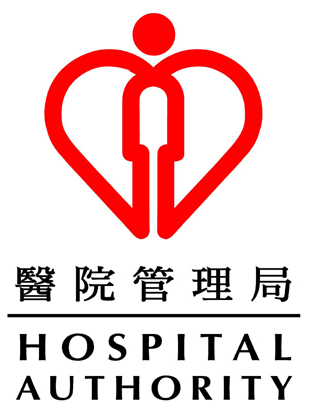 HA Central Committee on Infectious Diseases
HA Central Committee on Infectious Diseases Ref No.
CCIDER-COVID19-002(v2)
and Emergency Response (CCIDER)
Issue Date
21 March 2022
Review Date 21 March 2025
Interim Recommendation on Clinical Management of Approved by CCIDER
Paediatric Patients of Coronavirus Disease 2019
(COVID-19) Infection
Page
Page 11 of 11
Mood disorders, including depression
Schizophrenia spectrum disorders
• Neurologic conditions limited to dementia
• Obesity (BMI ≥30 kg/m2)*
• Primary Immunodeficiencies
• Pregnancy and recent pregnancy
• Physical inactivity
• Smoking, current and former
• Solid organ or hematopoietic cell transplantation
• Tuberculosis
• Use of corticosteroids or other immunosuppressive medications
2.
Suggestive higher risk for severe COVID-19 outcomes
• Children with certain underlying conditions
• Overweight (BMI ≥25 kg/m2, but <30 kg/m2)
• Sickle cell disease
• Substance use disorders
• Thalassemia
3.
Mixed evidence
• Alpha 1 antitrypsin deficiency
• Asthma
• Bronchopulmonary dysplasia
• Hepatitis B
• Hepatitis C
• Hypertension*
Footnote: * indicates underlying conditions for which there is evidence for pregnant and
non- pregnant people
(Source: Underlying Medical Conditions Associated with Higher Risk for Severe COVID-
19: Information for Healthcare Professionals. US CDC. Updated Feb. 15, 2022. Available
at
https://www.cdc.gov/coronavirus/2019-ncov/hcp/clinical-care/underlyingconditions.html)










